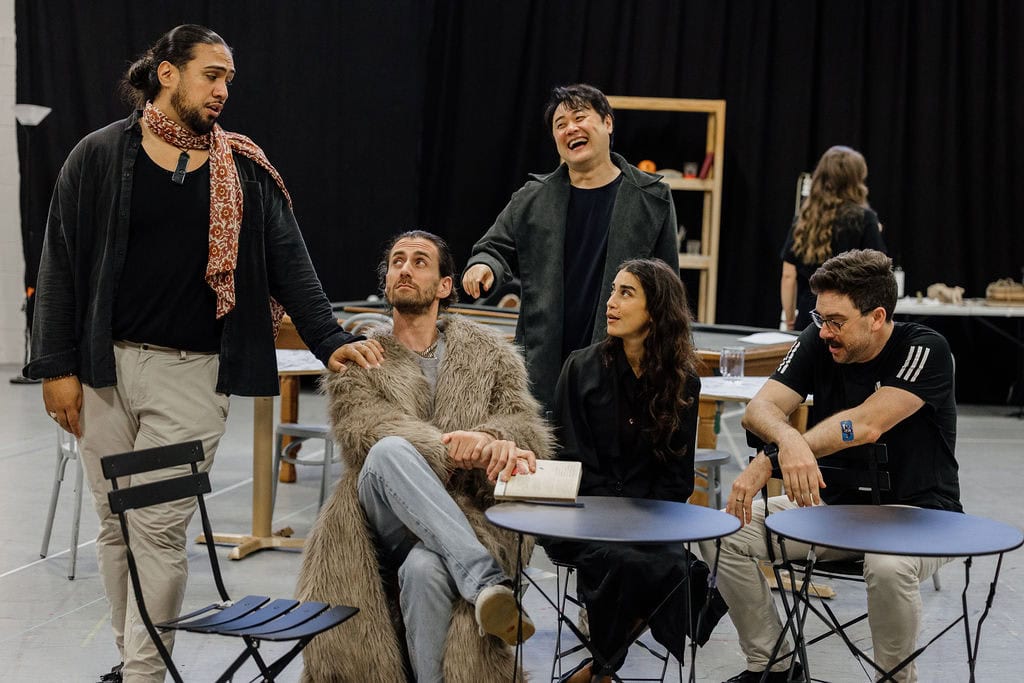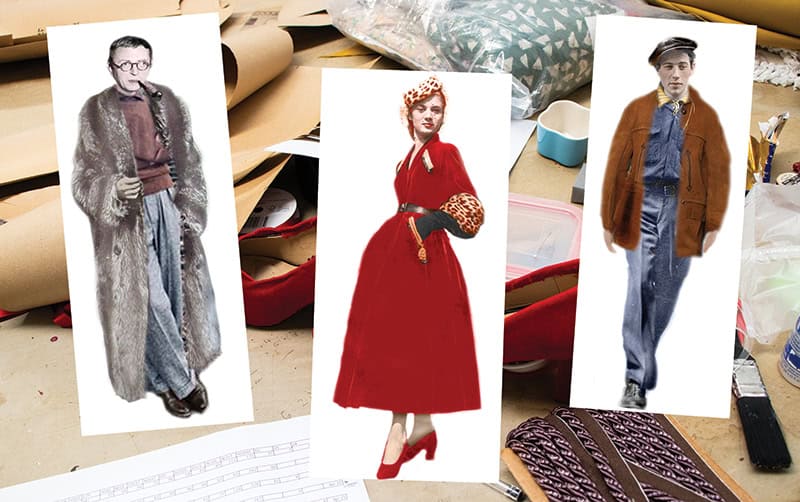
Kia ora koutou and nau mai haere mai once again to Stage Notes, as we continue to look forward to our very-fast-approaching 2025 season of La bohème.
With our cast, crew and creative team now having vacated our Parnell studio and taken up their temporary residence in Auckland’s Kiri Te Kanawa Theatre, we’re officially on the home stretch in our preparations for this gorgeous new production.
And so, with opening night now less than a week away, we felt now was the perfect time to reveal a little more about this richly detailed, gorgeously intimate take on Puccini’s classic. We sat down with La bohème director Bruno Ravella to learn a little more about his path to this point, how he’s chosen to bring this work to life, and what he’s learned along the way.
“I need to actually try this for myself”
“When I was at school I’d directed plays, and I was always interested in choreography and music, but I actually studied marketing and business [at university]. So I ended up with a business degree, and I went on to work in marketing and advertising for a few years.
“In that time, I was seeing everything I could, spending my money on going to the opera – I took a trip to New York just to see Karita Mattila in Salome at the Met. I had this frustration about my work, and I was trying to sort that out by seeing a lot of stuff. Eventually I got to the point where I thought: “I need to actually try this for myself.”
“It was about 20 years ago when I finally decided to change career; I met a director called John Cox who basically took me under his wing. I observed and assisted him on a couple of shows, and then I gradually followed that route of assisting, reviving, associate directing things, and leading very small shows.
“Eventually, I got my ‘break’ with Garsington Opera, on a production of Intermezzo by Strauss. That opera is a very fiddly, very tricky piece – it’s known as a ‘problem’ piece – but it went really well, and I started getting more work. It just took off. I was very lucky with people who trusted me, and who gave me those opportunities.”
“Paris is a character in itself”
“[La bohème] is astonishingly efficient … we meet this small, vibrant group of friends, and immediately understand their bonds, their differences, their identities. From there, everything flows naturally. So the challenge for me becomes: how do you illuminate those differences? How do you bring out the contrasts that make their relationships so human and so compelling?
“The city of Paris is more than a setting in this story – it’s a character in itself. That’s what inspired the idea of the city map, which we’ve used as a prop throughout: it’s a visual thread connecting the intimate and the epic, from garrets to grand cafés. I wanted the city to be present even when it’s offstage – to feel it breathing around these characters.

Costume Designer Gabrielle Dalton’s work for this season looks to the cobbled-together chic of mid-century Parisian artists
“Choosing the era took more thought. We explored different periods and eventually landed on 1947, just after the end of World War II. It’s a moment that pulses with emotional contradiction: the city is scarred but starting to heal; resources are scarce but spirits are rising. That tension – between fragility and hope – felt deeply aligned with the world of Bohème.”
“There is a space for imagination”
“I was drawn to the way these characters live as artists; everything they do is shaped by creativity. Murger’s novel (Scènes de la vie de bohème) describes Marcello’s furniture as backstage sets, which became a guiding image for me. Their world is built from fragments of theatre, poetry, and imagination.
“We’ve reflected that in our design: a space that feels handmade, resourceful, authentic to their lives.That said, we’re not aiming for strict realism. This isn’t a film set. These rooms may feel like the whole world to our characters, but we remind the audience that they’re in a theatre.
“We know that this postwar era was a period of major cultural change, so through projections, poetry, and abstraction we’ve tried to reflect the rapidly changing world that our Parisian artists lived in; a space rich in history and emotion, but a space for imagination too.”

Director Bruno Ravella enjoys a lighter moment with Stage Manager Chanelle Muirhead and Assistant Director John Wilkie
We can’t wait to finally raise the curtain on this one; to share Puccini’s masterwork as it’s never before been seen, sung by a truly world-class cast alongside the outstanding Freemasons Foundation New Zealand Opera Chorus and the finest orchestras in Aotearoa.
Final tickets are on sale now for our Auckland season, with multiple shows quickly approaching a sellout – if you haven’t yet made your preparations, now is the time to make your move. And if you’re already all booked, we’ll look forward to seeing you soon!